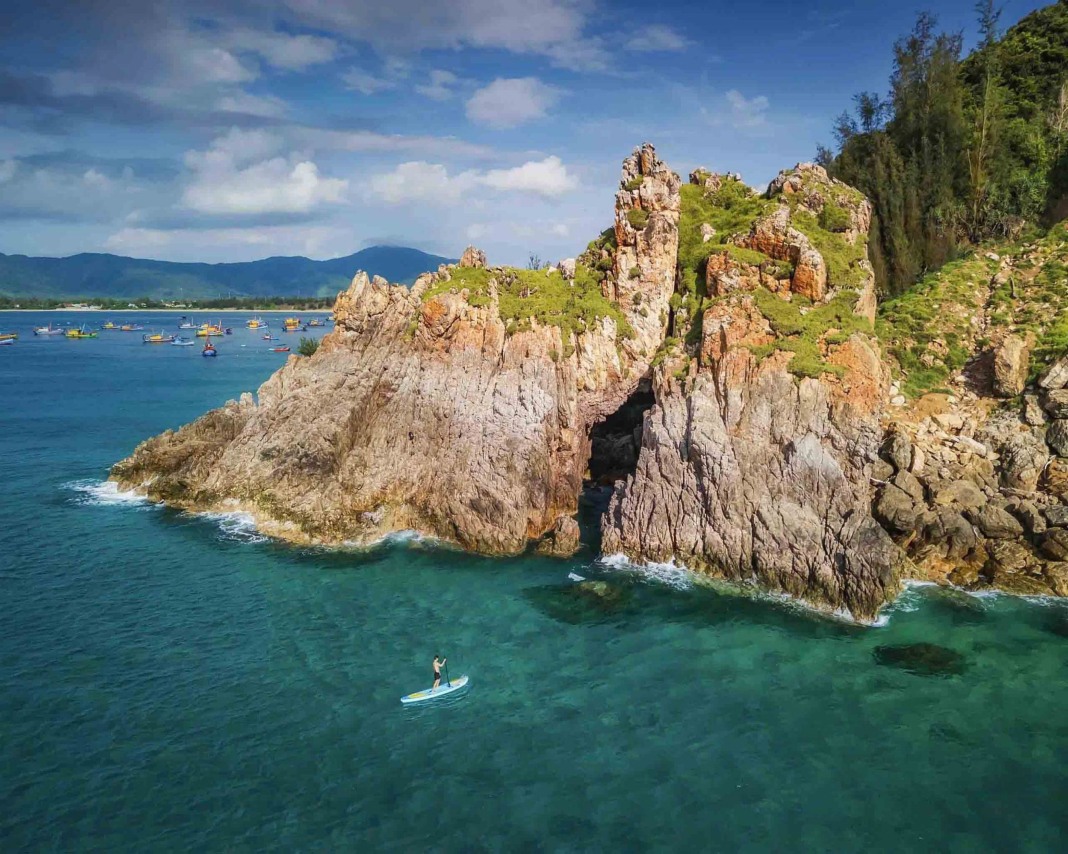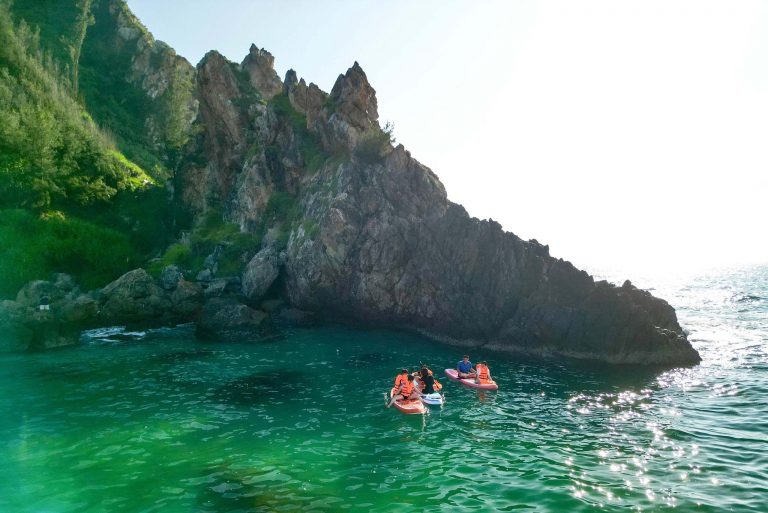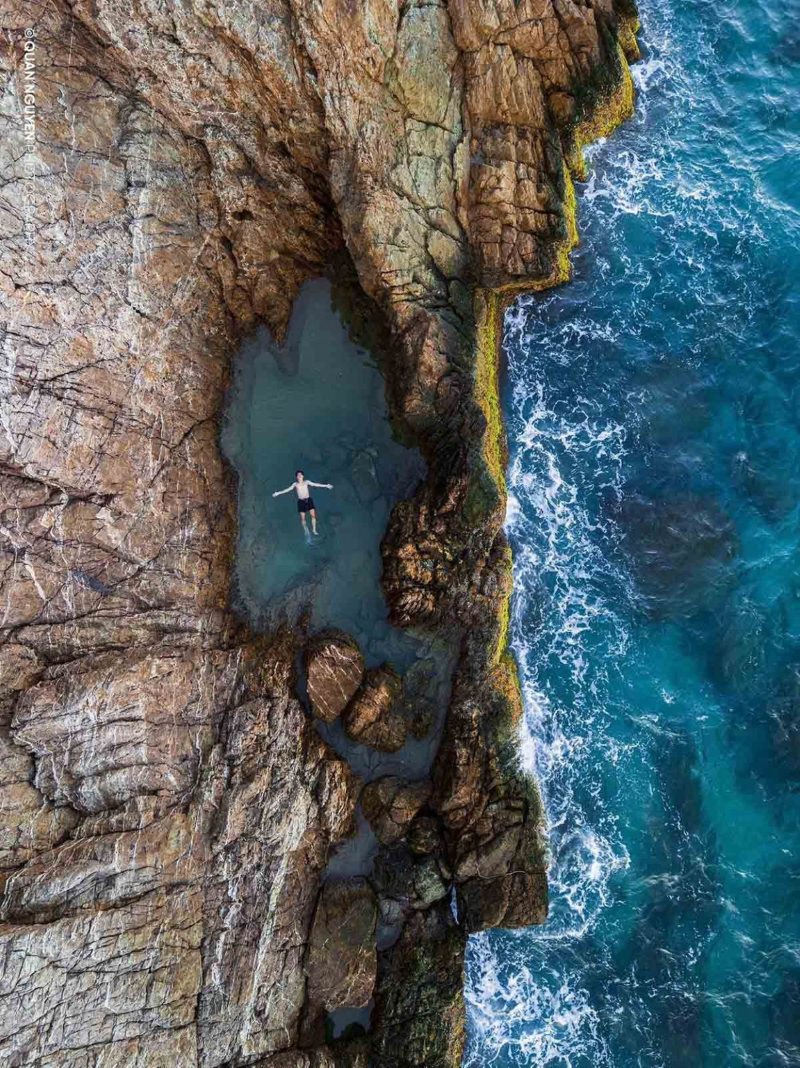Vi Rong Cape in Gia Lai Province has become a popular site for travelers seeking unspoiled coastal landscapes and outdoor activities.
Located around 20 kilometers north of Quy Nhon in former Binh Dinh Province, the site features a rocky promontory resembling a giant dragon stretching into the sea. Formed naturally over time, the cape is surrounded by smaller rock formations and a cave carved into the cliff face. During high tide, waves crash against the rocks, sending up white spray that attracts visitors and photographers.

One highlight is a natural “infinity pool” with clear seawater and uninterrupted views of the ocean. Visitors can swim, paddleboard, or watch the sunrise from the site. A small cave nestled among the rocks provides an additional spot for exploration.
The best time to visit Vi Rong Cape is from April to late August, when the sea is calm. Outside of sightseeing, tourists can join tours around the coastline, go snorkeling to view coral reefs, try squid fishing, or sample freshly caught seafood.
Travelers are advised to be cautious when approaching rocks near the waterline, as moss and algae can make the surfaces slippery. Swimmers are encouraged to wear life jackets or have companions nearby for safety.

Tour operators in the area offer packages combining Vi Rong Cape with other nearby attractions. The summer months are favorable for beach activities, while from November to January, larger waves draw surfers and adventure sports enthusiasts.
Visitors can also stop at Tan Phung fishing village, located close to the cape. The village, known for its traditional coastal culture, offers opportunities to observe daily fishing activities, visit seafood markets, and experience the slower pace of local life.
Vi Rong Cape’s mix of striking rock formations, recreational opportunities, and proximity to local communities has helped it become a notable destination in the province’s growing tourism sector. Local authorities and businesses are promoting the site alongside the province’s better-known beaches and heritage attractions to diversify the region’s appeal to domestic and international visitors.











